African Diaspora
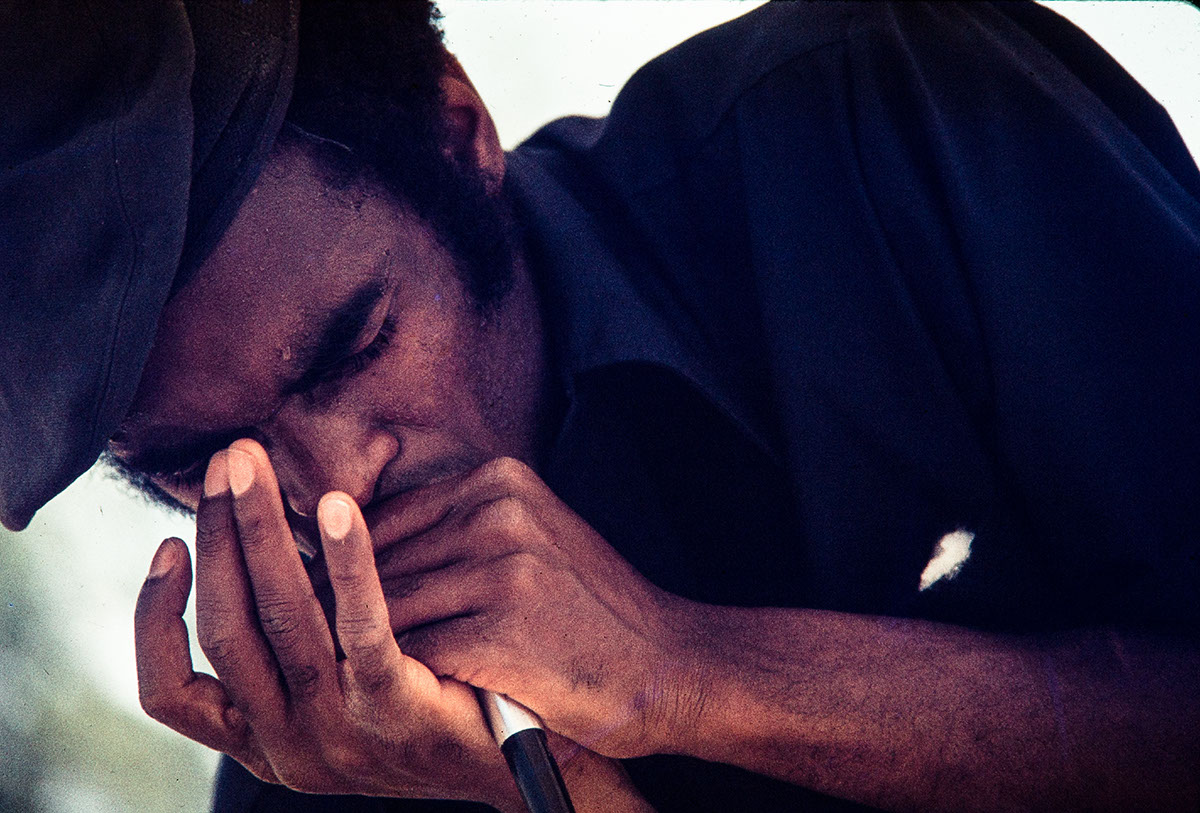
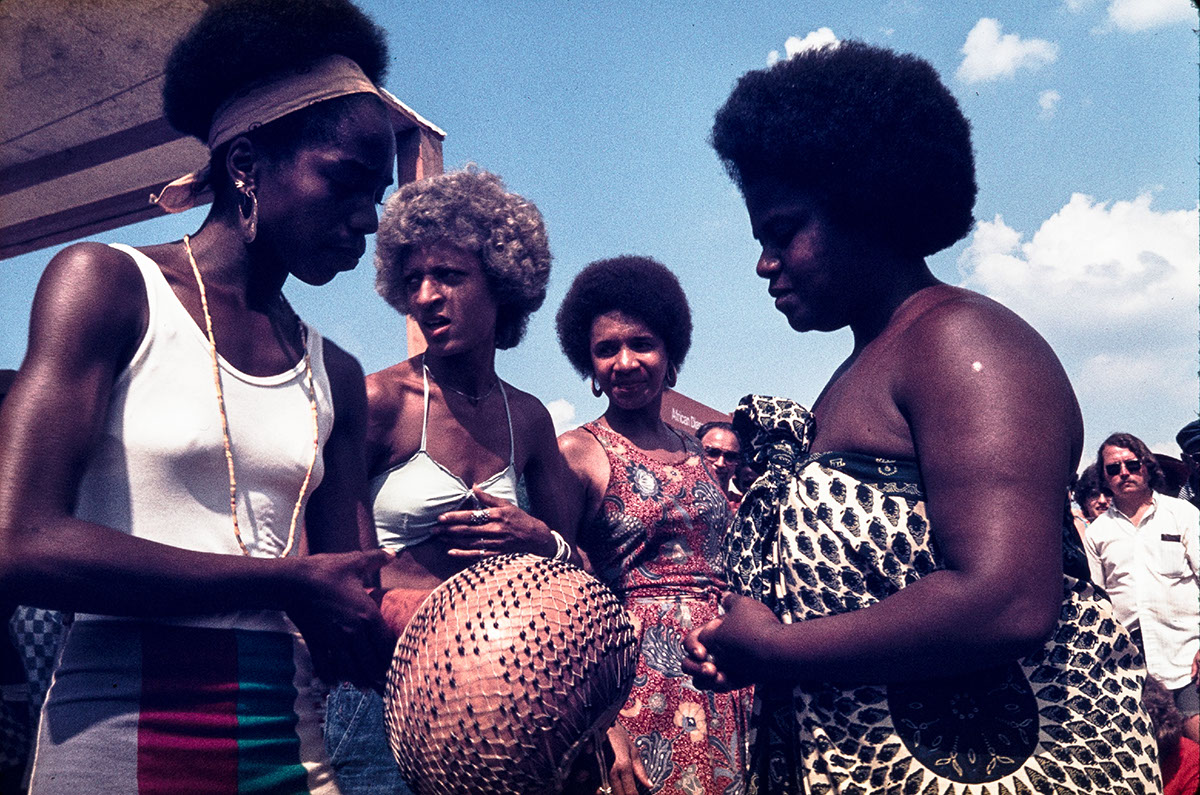
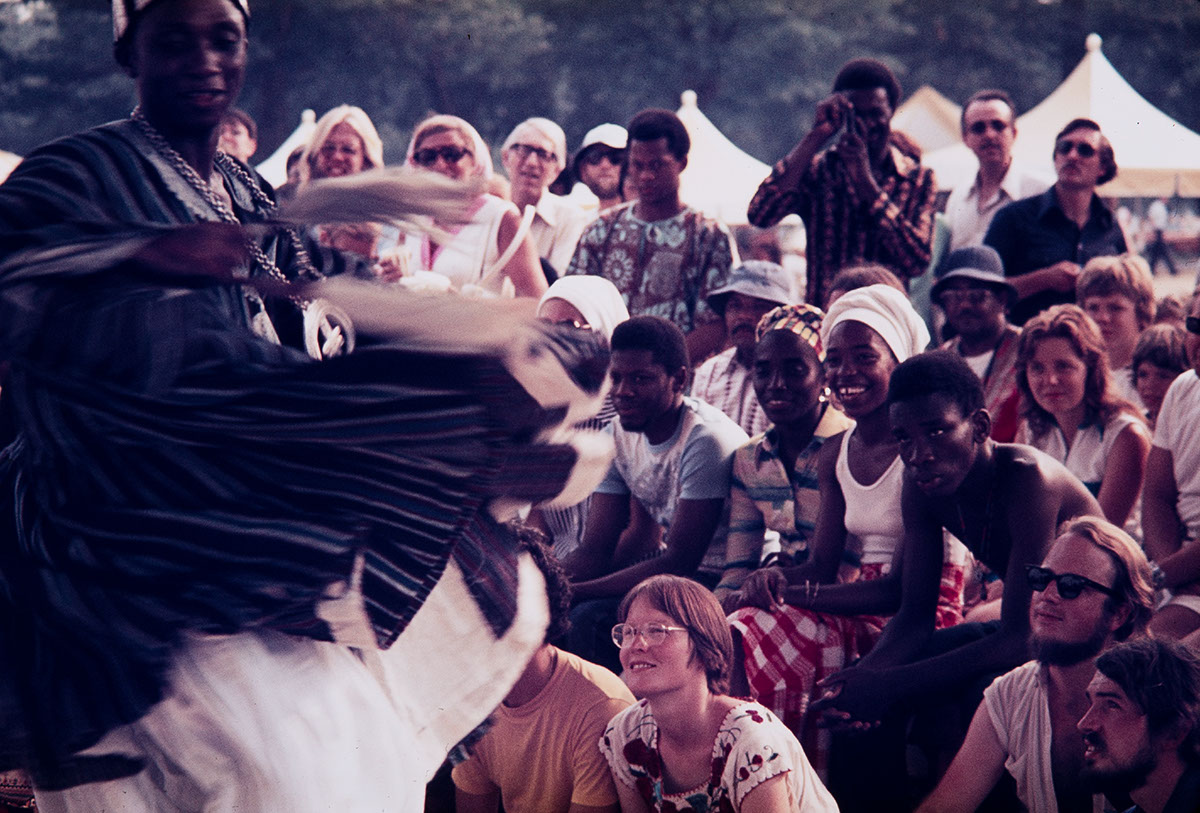


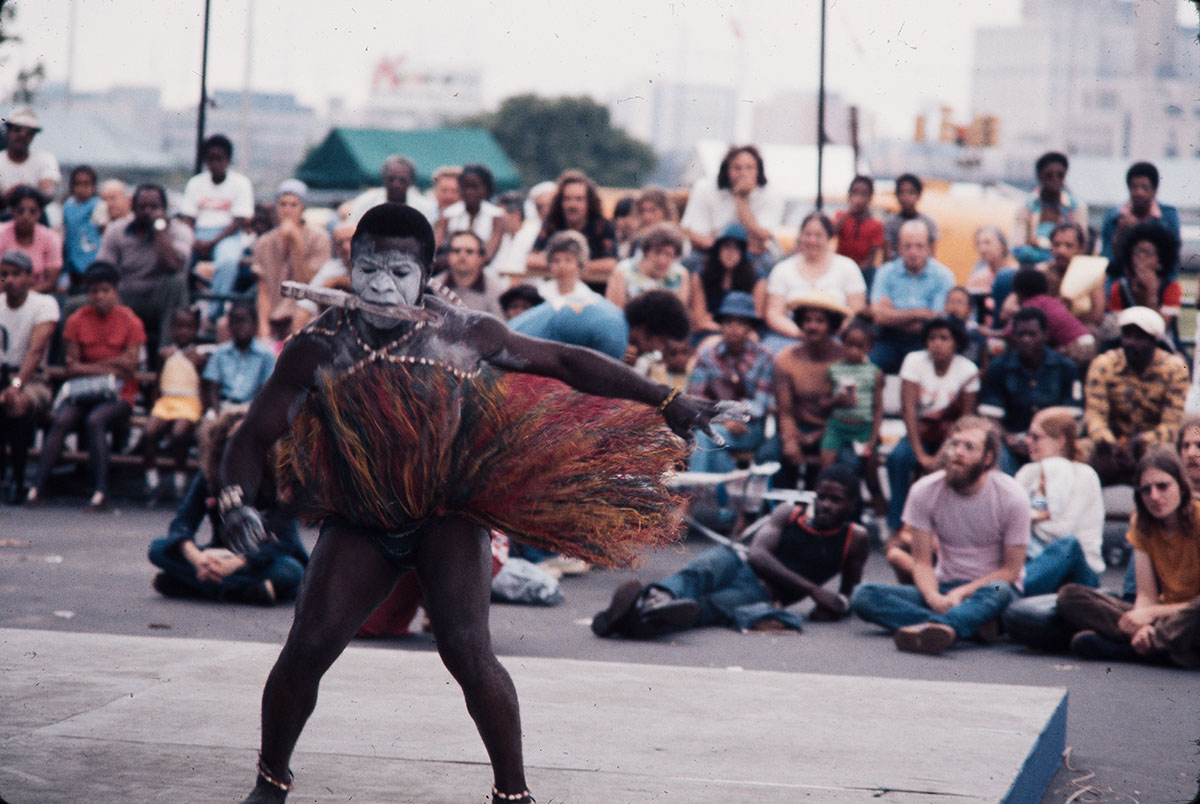
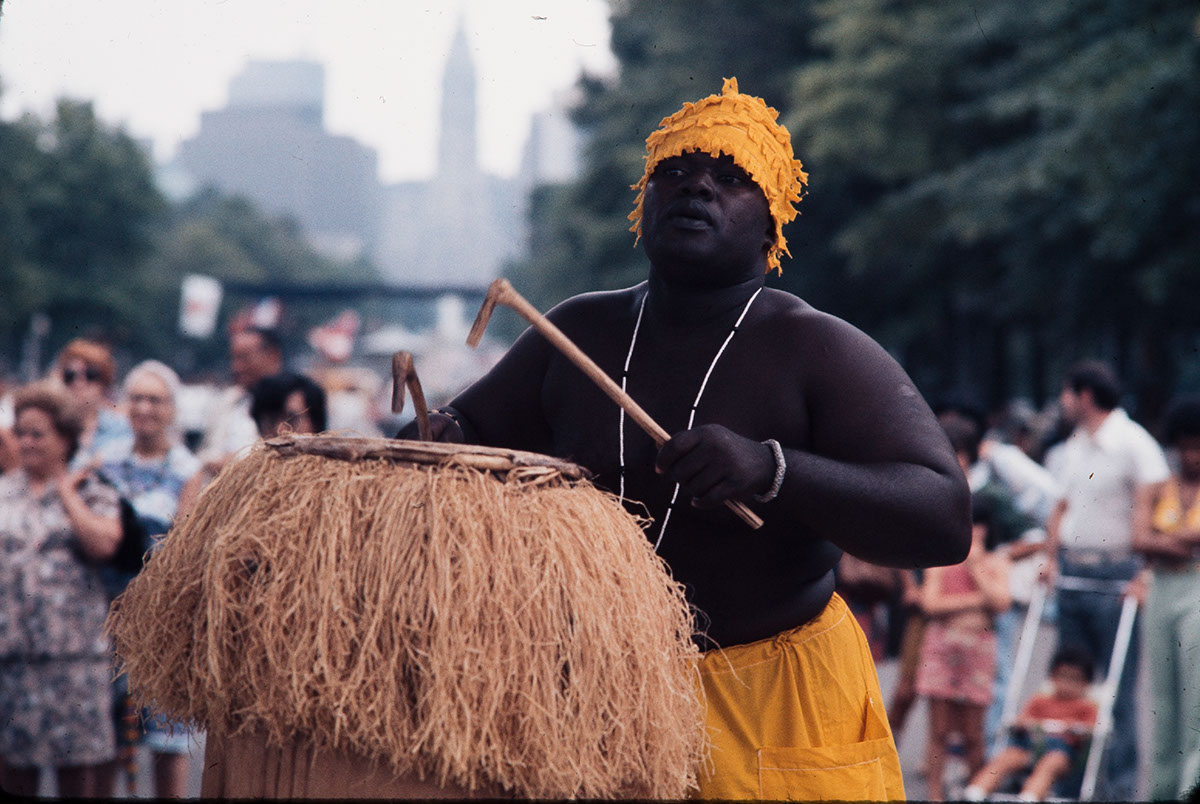
1975 was the second year of the Festival's African Diaspora program, which emphasized the strengths of black American cultural traditions. The organizing principle was to document those aspects of culture that link black Americans to Africa, via the Caribbean Islands and Latin America. Artists and craftspeople were invited to the 1975 Festival from the African nation of Ghana and the Caribbean nations of Jamaica and Haiti, and from across the United States. Musicians, dancers, cooks, woodcarvers, hairdressers, basket weavers and fishnet makers from three continents represented urban and rural, secular and sacred, home and community activities of black people of the Diaspora.
Presentations represented basic societal activities: worship, family, and trade. Worship activities took place on an altar setting that was a prototype of a rural U.S. church. Trade activities took place in a typical Caribbean marketplace. An African house, the traditional center of family activities, was the setting for small group presentations allowing for interchange between participants and Festival visitors.
Craft presentations demonstrated a link between traditions in the U.S., the Caribbean and Africa. Hair preparations have carried over without change from Africa. Cornrowing or hairbraiding and hair threading, part of a rich revival sweeping black American communities, were demonstrated by a black American and a Ghanaian hairdresser. Basket weavers from Mt. Pleasant, South Carolina, working with sea grass and split palmetto in woven coils, sat beside craftspeople from Ghana and Jamaica as they used comparable materials and techniques to produce similar baskets. In the garden behind the African house, foodstuffs common to the black community such as okra, turnips, and root vegetables were grown. In the food demonstration area many of these foodstuffs were used in versions of recipes prepared by cooks from Chicago, Accra, and Kingston. Similarly, musical performances sought to emphasize the family relations among cultural experiences linked by common origins, demonstrating the continuum of vocal and instrumental styles across communities separated by oceans and centuries.
The African Diaspora program was led by Rosie Lee Horn (Program Coordinator, later Rosie Lee H. Hooks) and Bernice Johnson Reagon (Folklore Specialist). It was organized with guidance from the African Diaspora Advisory Group, whose members included Roy Bryce-Laporte, James Early, Leonard Goines, Pearl Williams Jones, Worth Long, Fela Sowande, A. B. Spellman, Ron Smith, Carol Maillard, and Jane Sapp.

